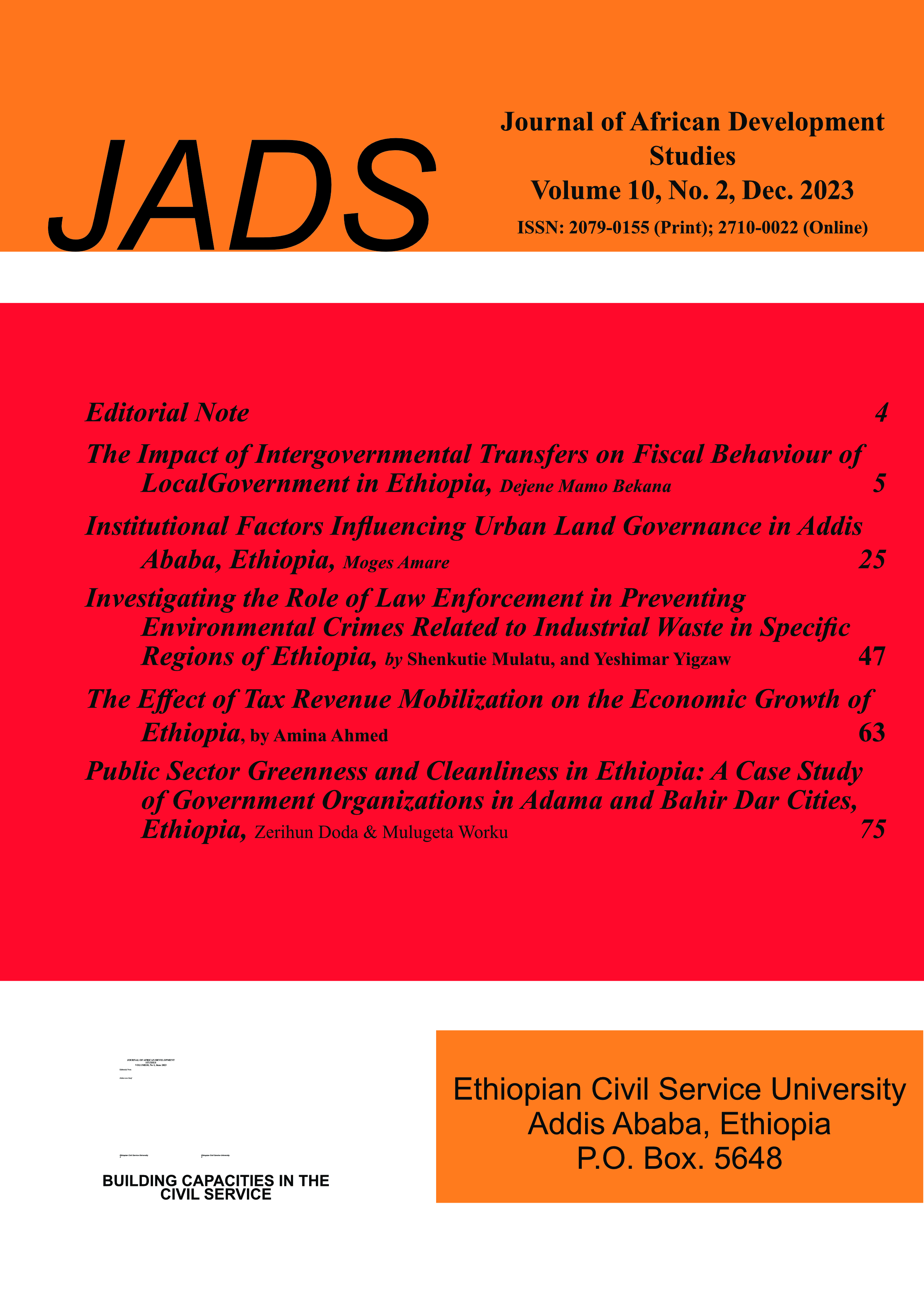Public Sector Greenness and Cleanliness in Ethiopia
A Case Study of Government Organizations in Adama and Bahir Dar Cities, Ethiopia
DOI:
https://doi.org/10.56302/jads.v10i2.9697Keywords:
Green public sector, clean working environment, sustainability ethics, effects, employee productivity, Ethiopian public sectorAbstract
Across the globe, calls for clean, green, and environmentally sustainable public sectors are growing louder, driven by the urgent need for a sustainable society, environment, and green development. These sectors act as crucial engines, both coordinating actions and promoting accountability across the private, government, and civil society spheres. However, in the Ethiopian context, information remains scarce on how employees and customers perceive the link between sustainability, clean and green environments within the public sector, and how these environments impact employee work motivation and productivity. This study dives deep into these questions, investigating the state of sustainability ethics and green/clean public sector maintenance in Ethiopia. It examines employee awareness, the challenges of building and running such workplaces, and ultimately, the perceived effects of clean and green working environments on the Ethiopian public sector. Employing a Concurrent Mixed Methods Design, the study utilizes both quantitative surveys with employees and customers and qualitative interviews with leadership positions. The findings reveal multifaceted impacts of green and clean public services, with the most resounding theme, supported by existing research, being the direct link between sustainable workplaces and higher productivity and success. These positive effects manifest in various ways, from increased employee and customer satisfaction, enhanced commitment and productivity, and the promotion of peace and stability, to laying the foundation for a healthy and productive society.

Downloads
Published
How to Cite
Issue
Section
License
Copyright (c) 2024 Journal of African Development Studies

This work is licensed under a Creative Commons Attribution-NonCommercial-ShareAlike 4.0 International License.




